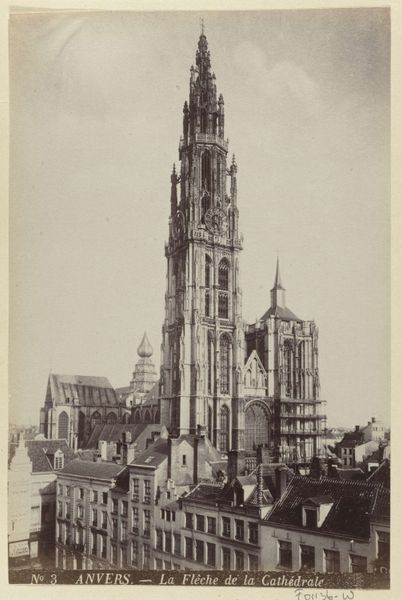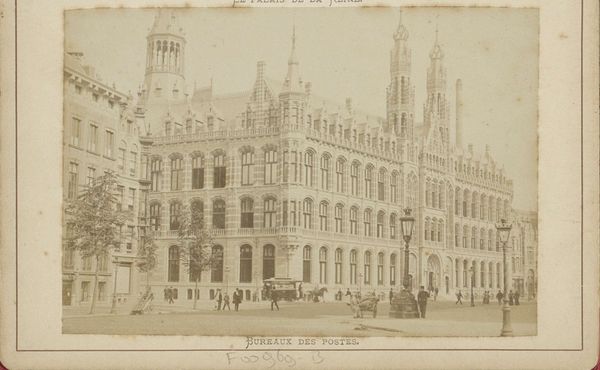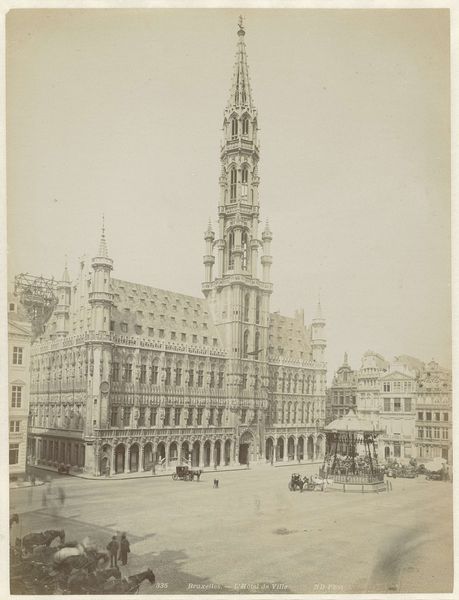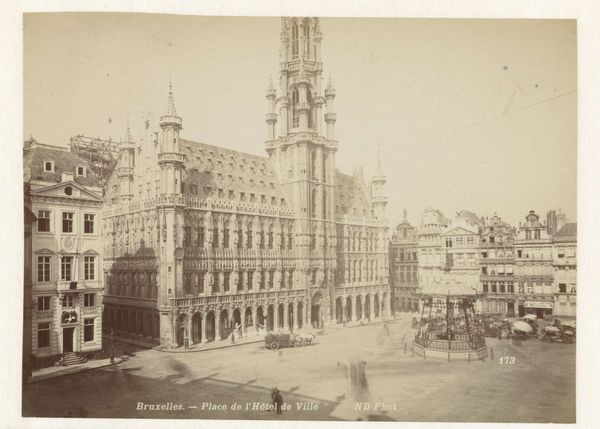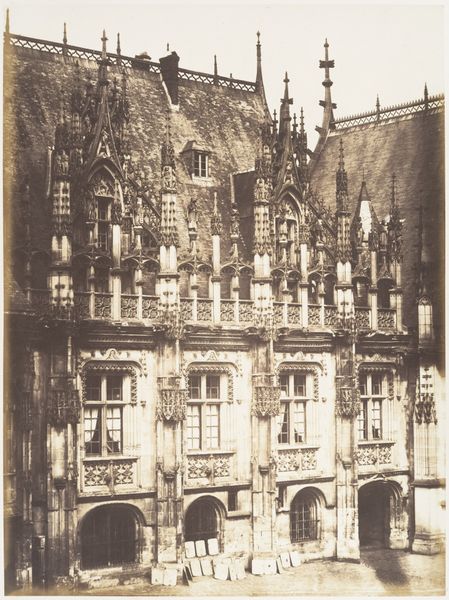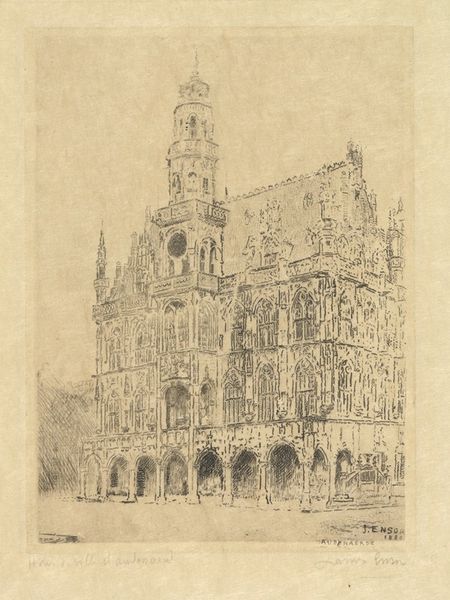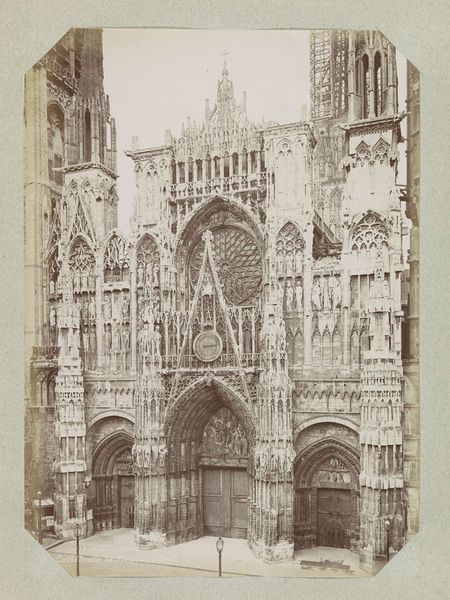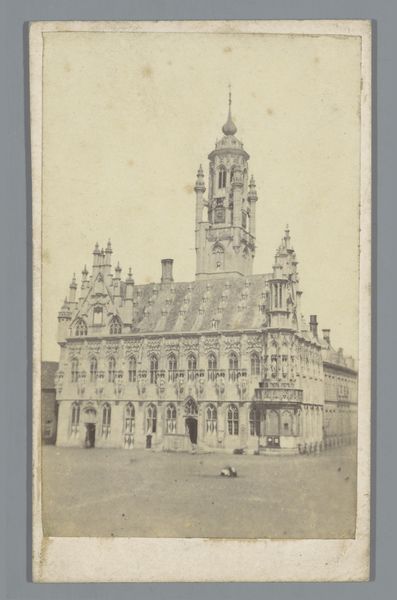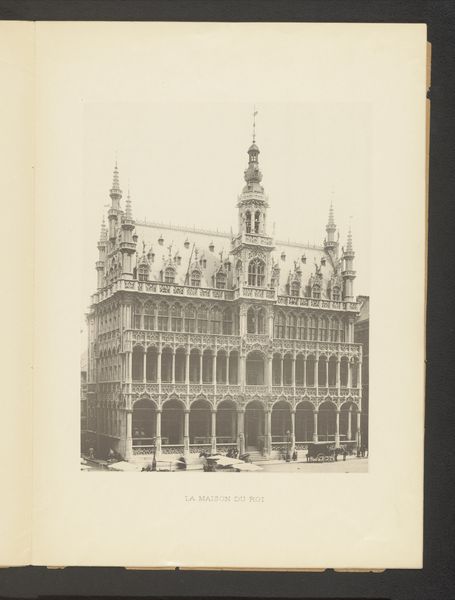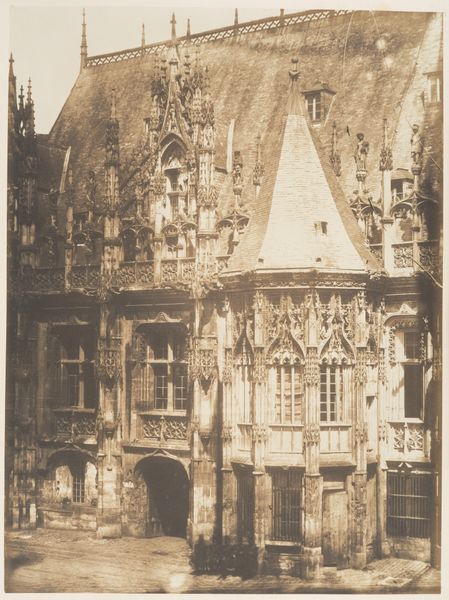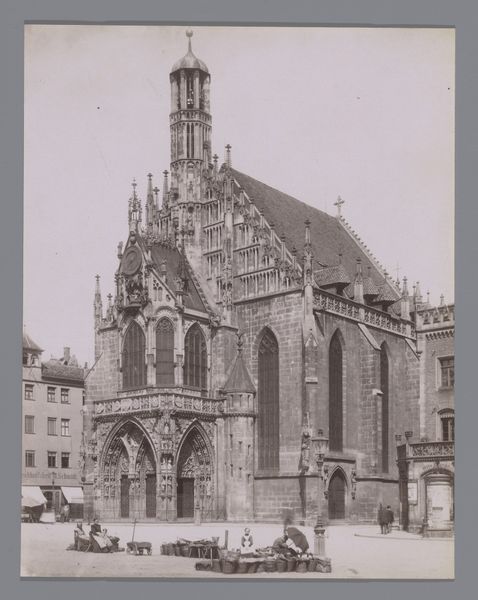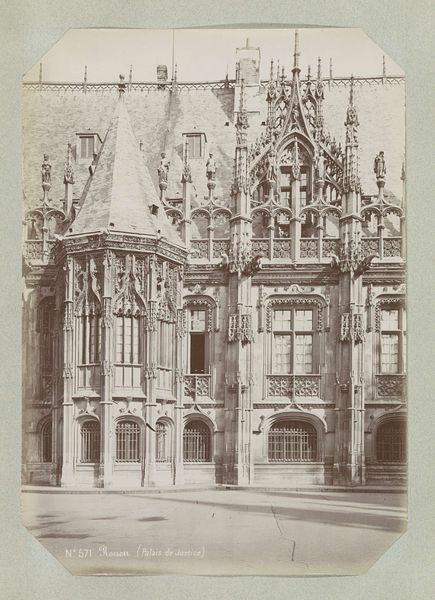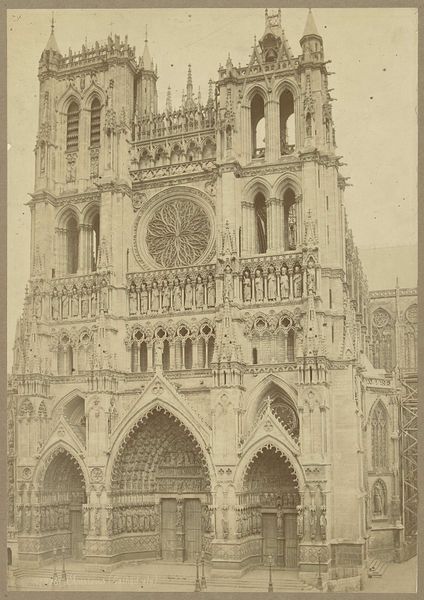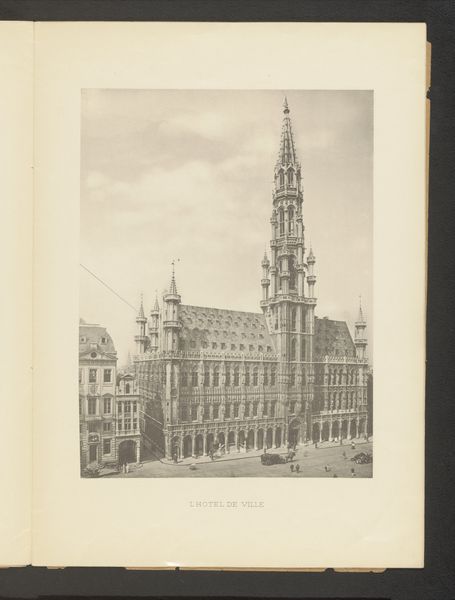
print, photography, architecture
#
neoclacissism
# print
#
photography
#
cityscape
#
architecture
Dimensions: height 465 mm, width 381 mm
Copyright: Rijks Museum: Open Domain
Curator: Here we have a print by Eugène Desplanques, dating from between 1851 and 1855, titled "Hotel de Ville d'Audenarde." Editor: Immediately, I’m struck by the intricate facade. It’s ornate, almost overwhelmingly so, and feels meticulously crafted. What was it like to capture this in the 19th century? Curator: Desplanques employs photography to represent a paragon of Neo-Gothic architecture with a precise focus on the town hall's facade, articulating the style’s return to historical forms with a sense of authority. Consider how the light reveals the depth of the architectural layering and decorative tracery. Editor: Absolutely. I find myself pondering the labour involved, not just in erecting such a structure but in Desplanques’ work, printing. What sort of conditions would craftsmen have been working in, constructing the town hall versus Desplanques himself creating the print? How did economic disparities reflect through material forms? Curator: An interesting perspective! The symmetry and the calculated verticality emphasize the order imposed on the architecture, perhaps mirroring societal hierarchies. The artistic intervention of photography here suggests a modern mediation of tradition, rendering the real in an idealized form. Editor: It feels poignant in a way. You can almost trace the economics in every flourish, a contrast of communal effort versus commissioned artistry that speaks volumes about class, access and artistic merit, doesn’t it? Curator: Perhaps. I see more an engagement with historical revival and the aesthetic celebration of form, transcending social context into a realm of ideal beauty and historical significance. Desplanques used the latest technological tools available at the time to produce an idealization, celebrating order. Editor: I respect that, of course. It has been compelling to explore how process and materiality impact our engagement with art, bridging architecture, craft, and early photographic labor with contemporary concerns. Curator: And for me, it's clarified how the language of art speaks beyond the tangible. Thank you!
Comments
No comments
Be the first to comment and join the conversation on the ultimate creative platform.
